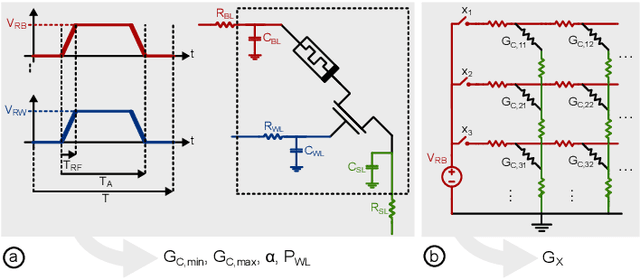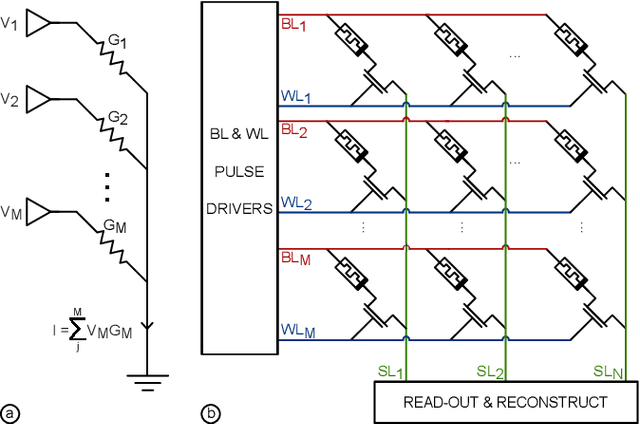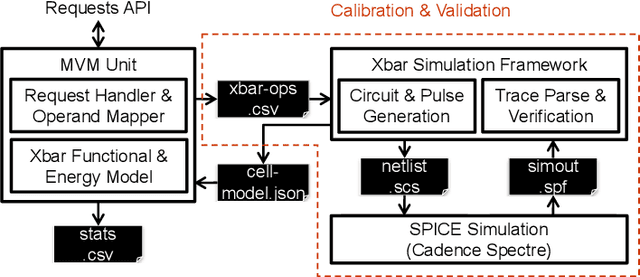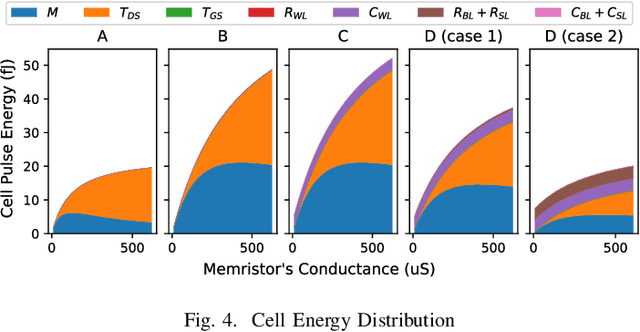Rebecca Pelke
A Calibratable Model for Fast Energy Estimation of MVM Operations on RRAM Crossbars
May 07, 2024



Abstract:The surge in AI usage demands innovative power reduction strategies. Novel Compute-in-Memory (CIM) architectures, leveraging advanced memory technologies, hold the potential for significantly lowering energy consumption by integrating storage with parallel Matrix-Vector-Multiplications (MVMs). This study addresses the 1T1R RRAM crossbar, a core component in numerous CIM architectures. We introduce an abstract model and a calibration methodology for estimating operational energy. Our tool condenses circuit-level behaviour into a few parameters, facilitating energy assessments for DNN workloads. Validation against low-level SPICE simulations demonstrates speedups of up to 1000x and energy estimations with errors below 1%.
CLSA-CIM: A Cross-Layer Scheduling Approach for Computing-in-Memory Architectures
Jan 17, 2024Abstract:The demand for efficient machine learning (ML) accelerators is growing rapidly, driving the development of novel computing concepts such as resistive random access memory (RRAM)-based tiled computing-in-memory (CIM) architectures. CIM allows to compute within the memory unit, resulting in faster data processing and reduced power consumption. Efficient compiler algorithms are essential to exploit the potential of tiled CIM architectures. While conventional ML compilers focus on code generation for CPUs, GPUs, and other von Neumann architectures, adaptations are needed to cover CIM architectures. Cross-layer scheduling is a promising approach, as it enhances the utilization of CIM cores, thereby accelerating computations. Although similar concepts are implicitly used in previous work, there is a lack of clear and quantifiable algorithmic definitions for cross-layer scheduling for tiled CIM architectures. To close this gap, we present CLSA-CIM, a cross-layer scheduling algorithm for tiled CIM architectures. We integrate CLSA-CIM with existing weight-mapping strategies and compare performance against state-of-the-art (SOTA) scheduling algorithms. CLSA-CIM improves the utilization by up to 17.9 x , resulting in an overall speedup increase of up to 29.2 x compared to SOTA.
 Add to Chrome
Add to Chrome Add to Firefox
Add to Firefox Add to Edge
Add to Edge